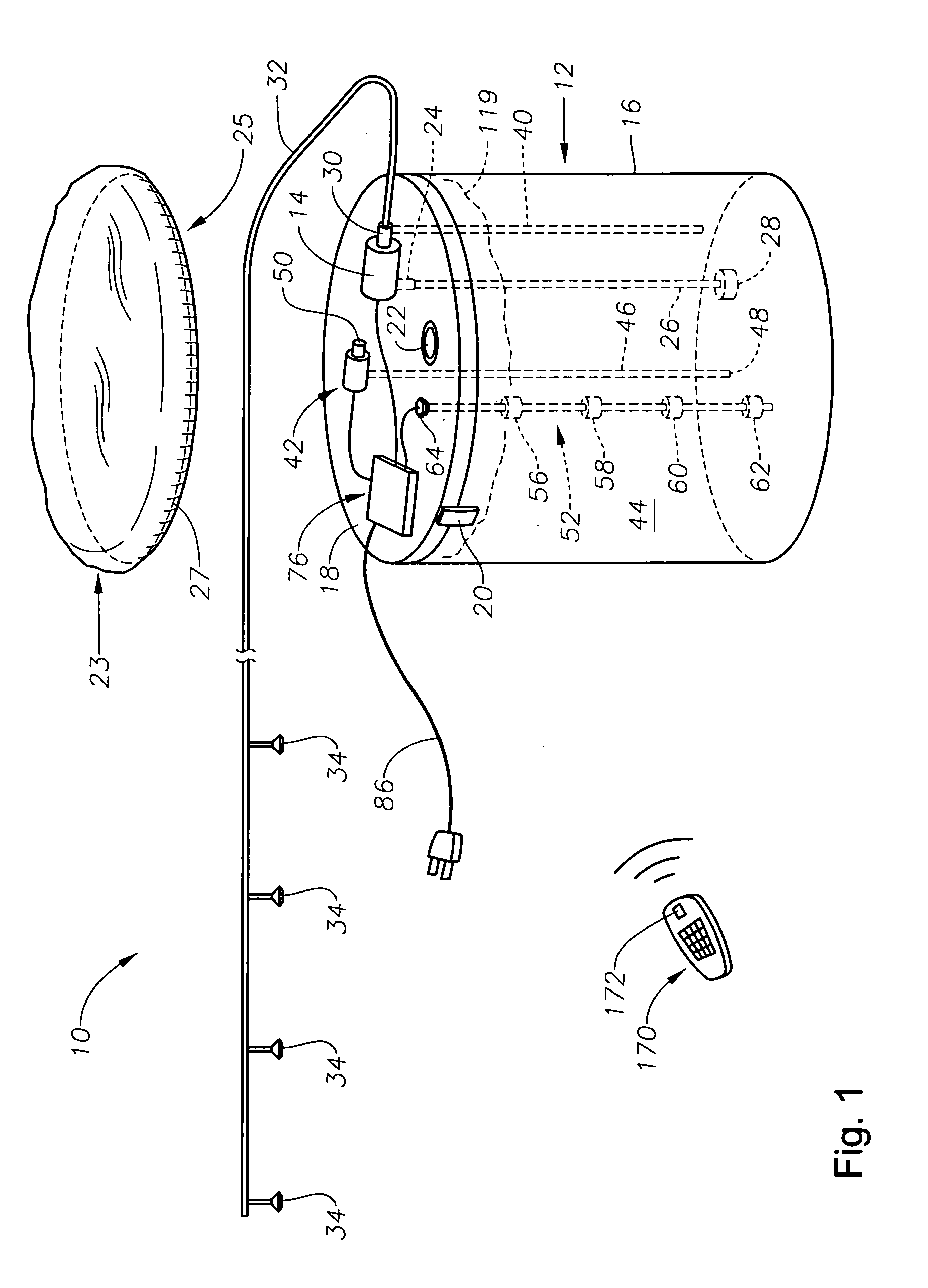Mosquito misting system
a technology for mosquitoes and misting systems, which is applied in the direction of application, liquid transfer devices, transportation and packaging, etc., can solve the problems of hazard for livestock and farm animals, inadequate measures, and inability to effectively distribute insecticide fluids, so as to improve protection, reduce the effect of misting and significant potential cost savings
- Summary
- Abstract
- Description
- Claims
- Application Information
AI Technical Summary
Benefits of technology
Problems solved by technology
Method used
Image
Examples
Embodiment Construction
[0016]FIG. 1 depicts an exemplary mosquito misting system 10 that is constructed in accordance with the present invention. The misting system 10 is intended to provide anti-mosquito protection and protection against other flying insects and pests within a defined outside area, such as the yard of a residential home, areas surrounding commercial buildings, animal husbandry facilities, and so forth. The system 10 is also useful for spraying of other chemicals in addition to pest control insecticides.
[0017]The misting system 10 includes an insecticide reservoir 12 that is operably associated with a motorized fluid pump 14 and a controller 76. The reservoir 12 is preferably a refillable container of suitable size / volume to contain a desired amount of insecticide. Three currently preferred container sizes are 55, 125, and 225 gallon containers. Selection of the size of container depends upon the size of the area to be protected by the system, number of nozzles, and frequency of use. A su...
PUM
 Login to View More
Login to View More Abstract
Description
Claims
Application Information
 Login to View More
Login to View More - R&D
- Intellectual Property
- Life Sciences
- Materials
- Tech Scout
- Unparalleled Data Quality
- Higher Quality Content
- 60% Fewer Hallucinations
Browse by: Latest US Patents, China's latest patents, Technical Efficacy Thesaurus, Application Domain, Technology Topic, Popular Technical Reports.
© 2025 PatSnap. All rights reserved.Legal|Privacy policy|Modern Slavery Act Transparency Statement|Sitemap|About US| Contact US: help@patsnap.com



